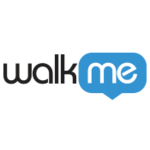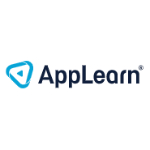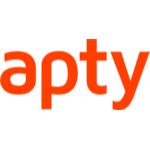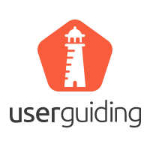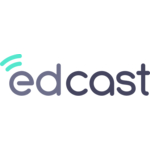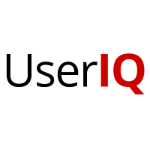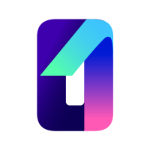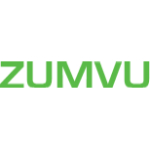TechnologyCounter provides genuine, unbiased real user reviews to help buyers make informed decisions. We may earn a referral fee when you purchase through our links, at no extra cost to you.
List of 15 Best Digital Adoption Platform
Showing 1 - 15 of 22 productsWalkMe is a digital adoption platform that aims to simplify and enhance the user experience by providing step-by-step guidance and automation. With WalkMe, users can navigate through complex websites and applications with ease, increasing efficiency...Read WalkMe Reviews
Inline Manual is the hassle-free solution to creating and managing interactive online tutorials for your website or application. With its user-friendly interface and customizable features, Inline Manual makes it easy to provide step-by-step guidance...Read Inline Manual Reviews
AppLearn Adopt is a software changing the way companies approach employee training and application adoption. With its intuitive design and user-friendly interface, AppLearn Adopt simplifies the learning process for employees, helping them adapt to ne...Read AppLearn Adopt Reviews
Userlane is a solution for effortless software adoption and onboarding. With its intuitive step-by-step guidance, Userlane empowers users to navigate any digital tool seamlessly. Say goodbye to steep learning curves and hello to maximum efficiency an...Read Userlane Reviews
Appcues is a platform that helps businesses of all sizes create personalized user experiences to enhance their customers journey. With its easy-to-use interface and innovative features, Appcues allows companies to engage with their customers in a mea...Read Appcues Reviews
Apty is a software that revolutionizes the way businesses train and empower their employees. With its user-friendly interface and powerful capabilities, Apty streamlines processes, improves efficiency, and enhances employee performance. Say goodbye t...Read Apty Reviews
UserGuiding is a user onboarding and product adoption tool that helps businesses to easily guide their users through their digital journeys. It provides a simple is a way to create interactive product guides and tutorials, allowing companies to impro...Read UserGuiding Reviews
Userpilot is a platform that revolutionizes the way businesses interact with their users. With its intuitive and personalized approach, Userpilot helps companies create seamless and engaging user experiences, resulting in higher engagement, conversio...Read Userpilot Reviews
EdCast is an innovative digital learning platform that is revolutionizing the way individuals and organizations acquire and share knowledge. With its user-friendly interface features, EdCast is empowering users to access the vast knowledge resources...Read EdCast Reviews
Chameleon, a dynamic and innovative software, revolutionizes the way businesses manage their customer experiences. With its intuitive design and extensive features, it empowers organizations to tailor their interactions with customers, enhancing enga...Read Chameleon Reviews
UserIQ is a robust user analytics and engagement platform that is revolutionizing the way businesses understand and interact with their end-users. Designed with the purpose of empowering businesses with actionable insights, UserIQ goes beyond basic a...Read UserIQ Reviews
Pendo Customer Experience is a groundbreaking software that takes your customer experience to the next level. With its intuitive interface and powerful features, Pendo allows businesses to truly understand and connect with their customers, leading to...Read Pendo Customer Experience Reviews
Whatfix is a highly efficient and user-friendly platform for customer support. It simplifies all communication channels, such as email, chat, and social media, for a seamless experience. Its flexibility allows it to adapt to the ever-changing demand...Read Whatfix Reviews
Bytes Route, is a solution for all your routing needs. Our powerful software is designed to streamline your navigation process, making it more efficient and hassle-free. With Bytes Route, you can easily plan your routes, track deliveries, and optimiz...Read Bytes Route Reviews
Zumvu is a solution for your online presence. With powerful features, user-friendly interface, and endless customization options, Zumvu makes it effortless for individuals and businesses to create a professional and engaging website. Elevate your onl...Read Zumvu Reviews
- What Is Digital Adoption Platform Software?
- Top Reasons Why Businesses Need Digital Adoption Platform Software?
- What Are the Top Key Features of Digital Adoption Platform Software?
- What Are the Top Benefits of Digital Adoption Platform Software?
- What Are the Steps to Choose the Right Digital Adoption Platform Software?
- What Are the Types of Digital Adoption Platform Software for Different Industries?
- What Are the Technology Trends for Best Digital Adoption Platform Software?
- What Are the Deployment Options for Digital Adoption Platform Software?
What Is Digital Adoption Platform Software?
A Digital Adoption Platform Software (DAP) is a critical tool for organizations looking to improve user adoption and expertise with digital technology. It functions as an interactive overlay, guiding users through complex software applications by providing step-by-step instructions, contextual tooltips, and real-time support.
Product adoption platform streamlines new user onboarding, shortens the learning curve for existing users, and boosts overall productivity. User analytics to assess engagement and detect bottlenecks, configurable content production for targeted advice, and integration capabilities with other apps are key characteristics of DAP software.
The best digital adoption platform guarantees that employees, customers, or end-users may efficiently exploit the full potential of software solutions by offering a user-friendly and immersive learning experience, eventually increasing productivity, decreasing errors, and driving digital transformation activities.
DAP software enables organizations to react quickly, maximize ROI on software investments, and remain competitive in a continuously developing digital market.
Top Reasons Why Businesses Need Digital Adoption Platform Software?
1. To increase employee productivity: The implementation of the best Digital Adoption Platform (DAP) Software facilitates the expeditious comprehension and familiarization of employees with various digital products or systems inside the organizational setting.
2. To reduce the onboarding time: The provision of intuitive training and coaching leads to a significant reduction in onboarding time.
3. To reduce training time and cost: By implementing easily comprehensible step-by-step tutorials and walkthroughs, organizations have the potential to substantially decrease both the duration and expenses associated with training.
4. To maximize employee engagement and satisfaction: By offering a user-friendly and intuitive approach to acquiring proficiency in utilizing various digital products and systems, employees have a heightened sense of empowerment and engagement in their professional endeavors.
5. To optimize user experience (UX): DAP software facilitates the enhancement of user experience within enterprises through the provision of customized solutions, training, and assistance.
6. To provide real-time analytics: Digital adoption platform companies enable enterprises to monitor real-time employee progress and use information.
7. To create a more efficient workforce: By implementing comprehensive training programs to familiarize staff with the most up-to-date technologies and processes, organizations can cultivate a workforce that operates with increased efficiency and productivity.
8. To help with employee retention: Top digital adoption platform software may offer valuable assistance to firms grappling with staff retention challenges by offering comprehensive training and consultation about the implementation and utilization of novel digital tools and systems.
9. To drive higher customer satisfaction: Businesses can enhance customer satisfaction by equipping staff with a more comprehensive comprehension of their products and services.
10. To automate processes: The utilization of the Digital Adoption Platform software enables firms to streamline laborious manual procedures, resulting in enhanced efficiency and convenience.
11. To access real-time data: By utilizing real-time user analytics, organizations have the opportunity to acquire useful insights regarding the utilization of their products or services.
12. To enable testing and experimentation: Digital adoption tools facilitate the rapid and effortless testing and experimentation of diverse digital tools and systems for enterprises.
13. To increase marketing ROI: The digital adoption platform facilitates enhanced client targeting for enterprises, resulting in improved marketing return on investment (ROI).
14. To stay ahead of the competition: By implementing Digital Adoption Platform (DAP) software, organizations can effectively position themselves as leaders in the realm of digital transformation.
15. To reduce system downtime: The best Digital adoption platform software facilitates the prompt identification and resolution of issues encountered by enterprises, hence minimizing operational interruptions and enhancing overall productivity.
What Are the Top Key Features of Digital Adoption Platform Software?
1. Guided Paths: A Digital Adoption Platform (DAP) can offer an interactive and guided pathway that consists of sequential instructions, enabling users to successfully do intricate activities. This practice contributes to the reduction of onboarding and orientation durations for users, hence diminishing the necessity for training.
2. User Feedback & Analysis: Digital Adoption Platform Software offers consumers the capability to submit feedback and monitor usage trends to find areas that can be enhanced. These feedback channels facilitate the optimization of user experiences.
3. Application Breakdown: This functionality allows users to analyze and compare different programs, facilitating the identification of the most efficient ones and those that are operating below expectations.
4. Automation: The automation of repetitive operations results in time and resource savings, so enabling teams to allocate their efforts towards more significant endeavors. Digital Adoption Platforms (DAPs) offer a range of functionalities, including automated workflow management, dynamic alerting, and automated testing.
5. Tracking & Reporting: Digital Adoption Platform Software (DAPs) offers comprehensive tracking and reporting capabilities to assess productivity, user engagement, and other relevant metrics for each given application. Additionally, this approach can aid in the identification of regions that warrant modifications and enhancements.
6. Mobile Capability: The utilization of mobile devices is experiencing a notable surge in popularity, and Digital Adoption Platform Software (DAPs) offers the capability to access programs from any mobile device while maintaining an equivalent user experience to that of a desktop computer.
7. Customizable Interface: The UI of the best Digital Adoption Platform Software can be customized based on user preferences, hence facilitating seamless access to applications for users.
8. Security: The Digital Adoption Platform encompasses a range of features designed to safeguard user data and sensitive organizational information, concurrently enabling the monitoring of user activity.
What Are the Top Benefits of Digital Adoption Platform Software?
1. Enhanced Productivity: The utilization of the best Digital Adoption Platform Software enables employees to enhance task efficiency and comprehension of the relevant application. Additionally, the implementation of this system facilitates the streamlined monitoring of processes, allocation of tasks, and dissemination of training materials to the relevant staff.
2. Access to Knowledge: The top Digital Adoption Platform Software offers customers a comprehensive collection of resources, including instructive videos, instructional materials, and frequently asked questions (FAQs), all of which are systematically structured for easy access. The library undergoes continuous updates to provide staff with access to the most pertinent information.
3. Increased User Adoption: The digital adoption platform has the potential to mitigate user training expenses by enabling users to swiftly acquire proficiency in using novel applications or features with low exertion. Additionally, it aids in the reduction of onboarding time by expediting individuals' familiarity with processes.
4. Improved Employee Engagement: The utilization of Digital Adoption Platform Tools facilitates the development of an interactive and user-friendly setting that fosters employee engagement, acquisition of novel proficiencies, and utilization of cutting-edge functionalities.
5. Easier Scalability: The utilization of DAP software facilitates the seamless implementation of novel features and applications as they become accessible. Furthermore, it guarantees that users can efficiently and effortlessly acclimate to novel staff responsibilities and processes.
6. Improved User Experience: The best Digital Adoption Platform Software offers customers a user-friendly and highly responsive interface, facilitating seamless navigation and application utilization. Additionally, the platform provides users with the capability to personalize their experience by creating personalized profiles and adjusting settings.
7. Reduced Support Costs: The use of a digital adoption platform mitigates the necessity for IT initiatives and maintenance activities. Additionally, there is potential for a decrease in support staff and training expenses, if consumers exhibit a heightened comprehension of utilizing novel applications or features.
What Are the Steps to Choose the Right Digital Adoption Platform Software?
1. First, determine your business’s needs and understand what type of Digital Adoption Platform Software is the best fit for you. Consider the current processes and goals of your organization and the areas of digital adoption most in need of improvement.
2. Research features offered by different the best digital adoption platforms. Consider whether or not a platform offers chat assistants, AI-driven contextual help, personalized learning pathways, integration with analytics data, and other features.
3. Evaluate the cost of the software. Pick a few finalists that meet your organization’s needs and compare the costs to ensure you are getting the best value for your money.
4. Select a Digital Adoption Platform. When it comes to decision time, look closely at the features and usability offered by different software solutions. Compare the features against one another and pick the one that best fits your organization’s needs.
5. Once you have selected the best Digital Adoption Platform tools, go through the implementation process. The implementation process requires a detailed strategy for the installation and setup of the software. Work with the software’s support team for help with installation and any questions you have.
6. Ensure proper user onboarding. Develop a personalized onboarding program for each user of the software. This will ensure that users understand the features and capabilities of the software, as well as how to use it successfully.
7. Monitor usage and adoption rates. Top Digital Adoption Platform Software can help track user behavior in the software, giving you access to valuable metrics that can be used to measure how successful the software is. Continually monitor usage and adoption rate metrics to ensure that your digital adoption program is reaching its goals and objectives.
What Are the Types of Digital Adoption Platform Software for Different Industries?
1. Education: Educational top Digital Adoption Platform Software provides tailored technological solutions that are specifically designed for educational institutions. The platform offers customized instructional methods, evaluation techniques, communication channels, and collaborative features, which assist educators in maximizing the benefits derived from their digital resources.
2. Healthcare: Healthcare Digital Adoption Platforms (H-DAPs) provide a wide range of technology solutions specifically designed to meet the distinct and growing requirements of healthcare organizations. This includes the tasks of managing electronic health records, monitoring patient information, ensuring adherence to regulatory requirements, and other related responsibilities.
3. Financial Services: Financial Services Digital Adoption Platform Software (F-DAPs) have been specifically developed to optimize automation and enhance the efficiency of various activities within the realm of financial services. These platforms are equipped with features that provide increased security against fraudulent activities, enable tracking of asset performance, and offer capabilities for assessing risks.
4. Manufacturing: Manufacturing the best Digital Adoption Platforms (M-DAPs) facilitates the effective management of inventory and supply chain activities for manufacturers. The technology solutions provided are coordinated and tailored to meet specific needs. These solutions encompass tracking, optimization, and control functionalities, along with analytics and reporting capabilities.
5. Retail: Retail the best digital adoption platform provides a variety of functionalities aimed at optimizing operational processes and improving the overall customer experience. Some examples of these technologies encompass analytics, automated customer-facing services, product suggestions, inventory management, and location tracking.
What Are the Technology Trends for Best Digital Adoption Platform Software?
The technology advancements in top Digital Adoption Platform Software can be categorized into two primary classifications.
1. Cross-Device Experiences: By utilizing nascent technologies like machine learning and artificial intelligence, the best Digital Adoption Platform Software facilitates the provision of consistent experiences across various devices for enterprises. By implementing the capability for personalization and customization of user interfaces across various platforms, organizations can enhance user experiences and bolster user adoption rates.
2. Data-Driven Insights: The utilization of data-driven insights has facilitated the ability of Digital Adoption Platform Software to enable organizations to assess the efficacy of their applications and the caliber of client experiences. This process aids enterprises in identifying opportunities for enhancement and ensuring the provision of increased value from their apps to their clientele.
What Are the Deployment Options for Digital Adoption Platform Software?
The available deployment methods for Digital Adoption Platform Software typically vary based on the specific product that a firm intends to utilize. In a broad sense, the available alternatives encompass on-premise, Software as a Service (SaaS), and cloud-based solutions.
The on-premise deployment method is a conventional approach in which firms put digital adoption platform on their actual servers and oversee its management using internal resources and personnel. This solution is particularly suitable for clients with specific needs and intricate information technology infrastructures, who seek extensive autonomy in managing their software.
Software-as-a-Service (SaaS) is a delivery model that operates in the cloud, wherein clients remunerate a recurring cost to access software over the internet. Customers are not required to maintain servers on their premises, acquire extra hardware, or oversee software management. This particular deployment option offers significant flexibility as it enables users to access the software from any location.
The cloud-based deployment approach provides enterprises with the opportunity to execute software on virtual servers hosted in the cloud. This particular deployment approach provides the highest level of scalability and is particularly well-suited for enterprises that require rapid expansion of their software capabilities.
Nevertheless, due to the limited control that users possess over the best digital adoption platform, this particular deployment approach is unable to effectively cater to intricate demands that necessitate customization.
